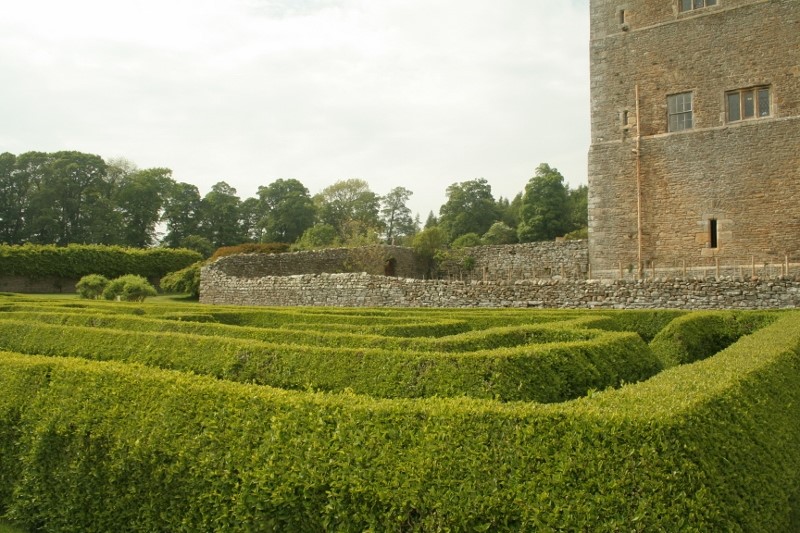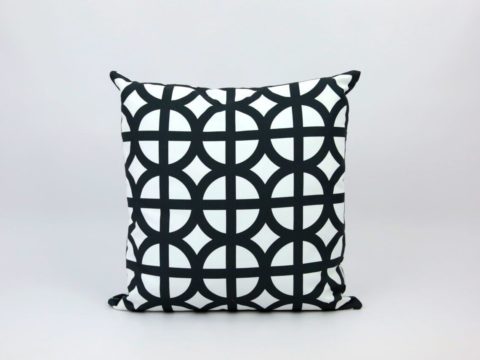Bolton Castle
A mediaeval stronghold set in idyllic landscape
Chapter 2 : Visiting the Castle
The castle, built of the lovely yellowey-grey sandstone of North Yorkshire, is square in floor plan with enormous towers in the four corners, and a central courtyard. The west side is more-or-less intact, and that is the side where you can get some idea of what it must have been like in its heyday.
The property is still owned by the Lords Scrope and it is rather nice to see a place that has not been renovated, painted, trimmed and polished, but instead has the air of somewhere vacated long ago, with a few belongings left behind. All of the information provided is clearly written and informative. Particularly interesting is the plethora of information about mediaeval and Tudor games - mum chance, hazard and nine-men’s morris to name a few.
Entry to the castle is by a narrow flight of stairs in the middle of the north wall. This leads into a short corridor with a brief display showing a timeline of the castle’s history, and the family tree of the Scropes of Bolton, and their successors the Powlett Earls of Winchester.
Passing through this corridor, there is a blocked off spiral staircase at the west end and a large wooden door in the south wall, leading into the café. This is in the lower part of what was once the Great Hall. Unfortunately, there is a very strong smell of old chip fat, which rather detracts from the overall ambience. However, the flapjack I had was very good.
Through the café, and down a narrow passage (more loos – rather nicer than those in the carpark) you enter the ticket office and small shop. Through the shop there is a spiral stone stair, leading both up and down. I chose to go up first.
The stair leads into the chamber known as the solar, which was assigned to Mary, Queen of Scots as her Privy Chamber. This is where the imprisoned Queen would have spent most of her days. Because the windows are set high on the wall, you would need either to sit on the ledge or stand to see the fabulous view across Wensleydale.
This is a huge room with a great stone fireplace, and a few minimal articles of furniture, which is typical of how a mediaeval castle would be. The whole room was whitewashed, to increase light. There are four windows set in the solid stone walls, three facing south and a fourth west – the larger southern windows post-date Mary’s time and she would have had less of the glorious view. At the west end of the room, there is a narrow corridor leading to the sophisticated garderobe. This worked by draining into huge cesspit and was dug out from time to time. The system lasted well into the Victorian era.
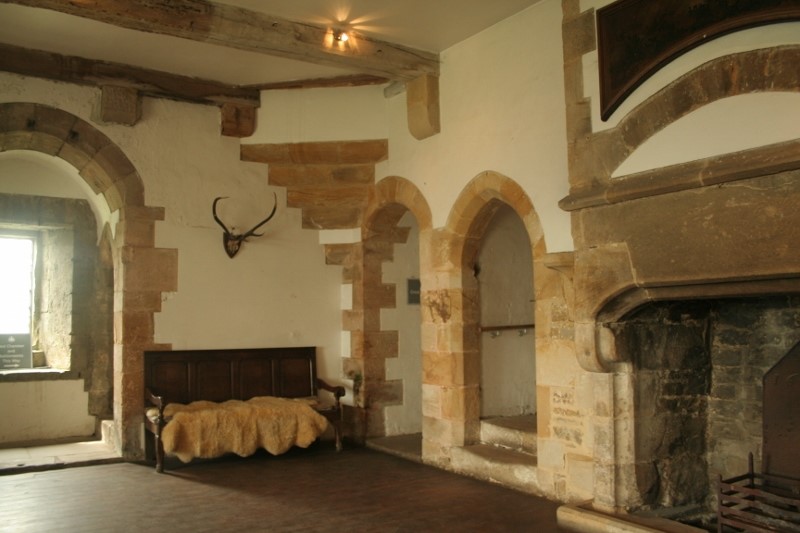
Behind the solar, through a door in the north wall to the left of the fireplace, is the entrance to a smallish room called the nursery, which is still roofed with the original timbers, dating from the late fourteenth century. There are lots of interesting mediaeval games with the rules printed on handy laminated cards, and also a very old cradle.
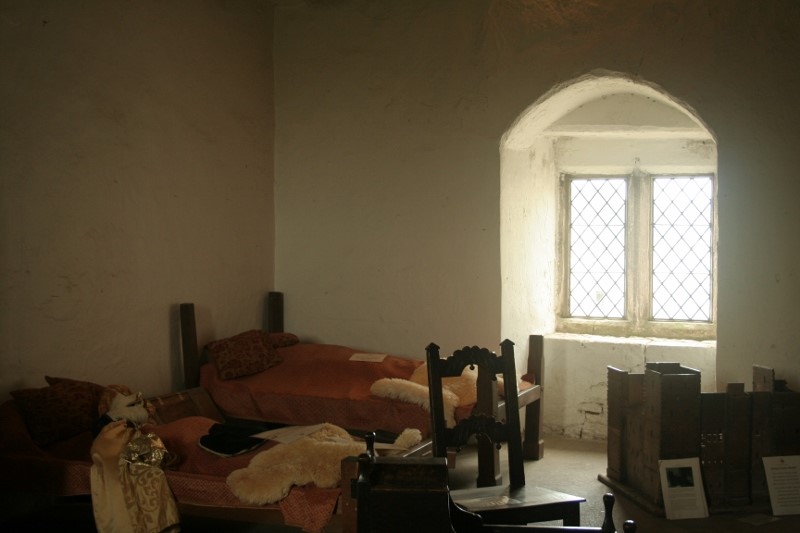
Exiting the nursery, there is a corridor leading north which decants into the Great Chamber, which would have been the main room used by the family. The east windows face the gardens, and the west overlook the courtyard.
Again, in keeping with the mediaeval practice, the only furniture is the Lord’s chair, with a rather smaller one for the Lady (which she would have had to give up if an honoured guest came) and a table for them. Everyone else would have sat on removable benches with trestle tables for dinner (more on dining habits here). Mary is described as dining here under her cloth of state.
A suit of armour nods to the Civil War role of the castle and a rather handsome tapestry clothes the north wall.
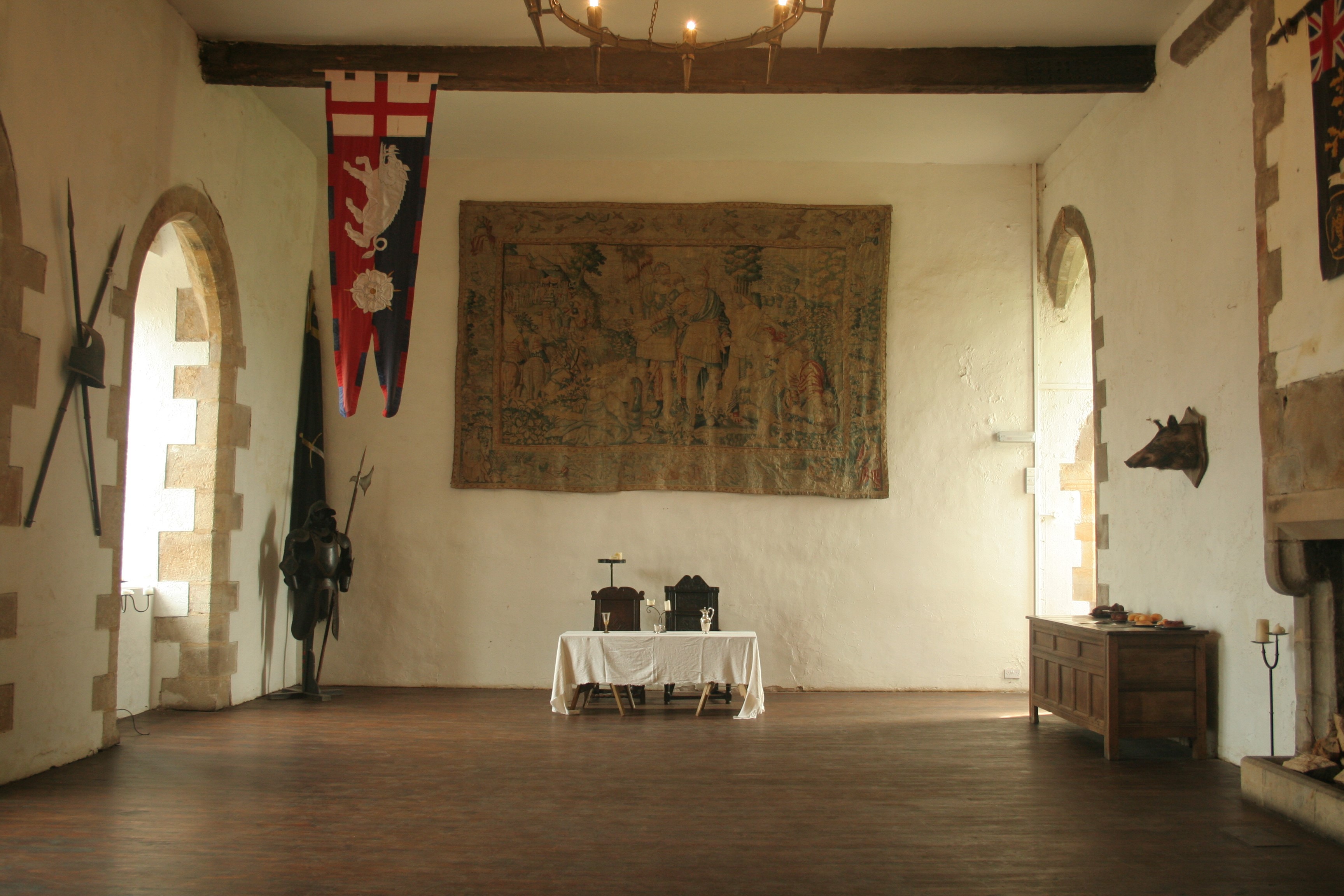
Back out into the solar, and in the north-west corner there is a stair leading up to the room Lady Scrope’s chamber. In dimensions and aspect it is a complete repeat of the room below, although there is a tester bed in one corner, and a couple of coffers such as Mary might have had. The east wall is also decorated with a cloth hanging.
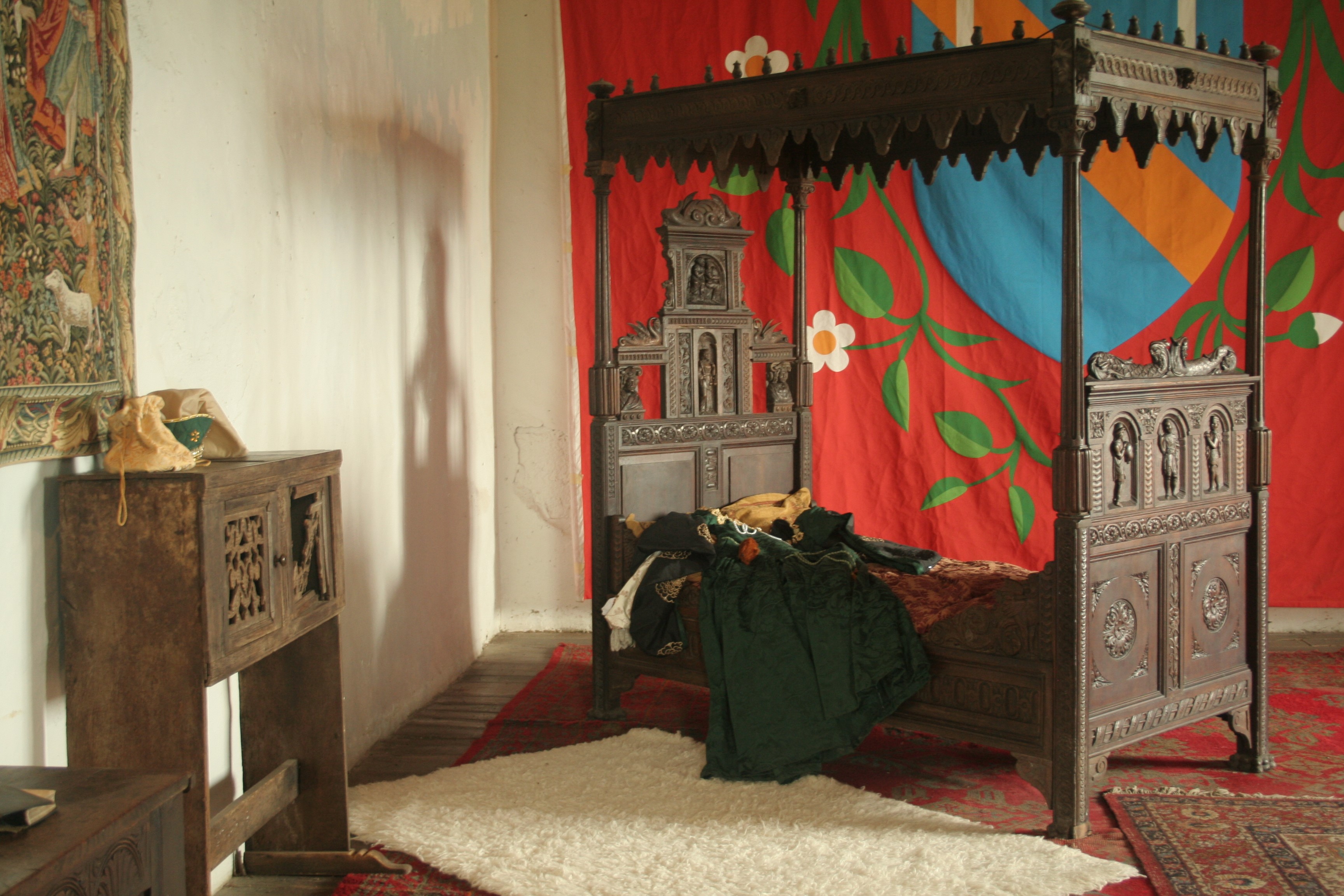
Continuing up the spiral stair, the third room in this south-west tower is the bedroom of Lord Scrope, which, as the principal bedchamber, was probably given to Queen Mary during her sojourn here. It is identical in shape to the two rooms below, and would have an even more commanding view of the countryside but for the fact that the windows are older and smaller than the late sixteenth century additions in the chambers below. Like the rooms below, it would have been plastered and lime-washed, so would have seemed rather lighter than it now does.
Having researched so much about Mary Queen of Scots, I thought I knew about her ordeal, but seeing this place where she spent six months hoping that Elizabeth would help her regain her throne and every day passing with no progress, really brought home to me the human aspect of her situation. The castle itself was comfortable, even luxurious, by sixteenth century standards, but it was not like the palaces she was used to. Day after day must have been spent gazing through the windows, hoping to see messengers announcing her freedom. Night after night in this chamber, praying for the next day to bring release.
You can continue to climb up onto the battlements and see over the courtyard and the ruins of the remainder of the castle. If you suffer from vertigo, this is just about doable, but I didn't linger!
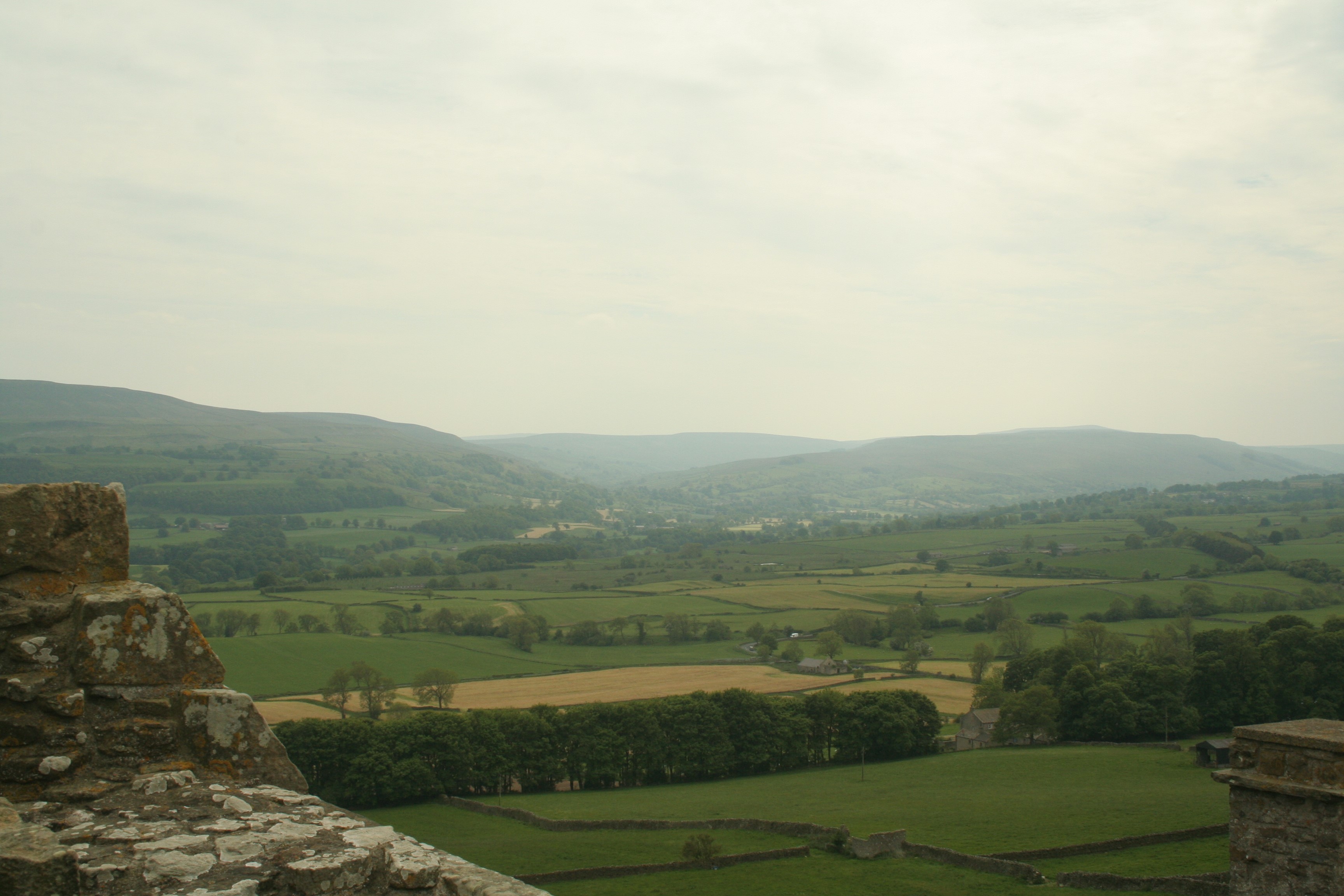
Return to the solar, and, instead of going down the spiral stairs back to the ticket office, take the narrow passageway that leads into the remains of the chapel, which runs along the south side of the castle. Dedicated to St Anne, the mother of the Virgin, it was completed in the late fourteenth century and has three small cells for priests. After the deposition of Richard II, it was dedicated as a chantry (a chapel where priests said Mass for the souls of the dead) for prayers for the King and William Scrope.
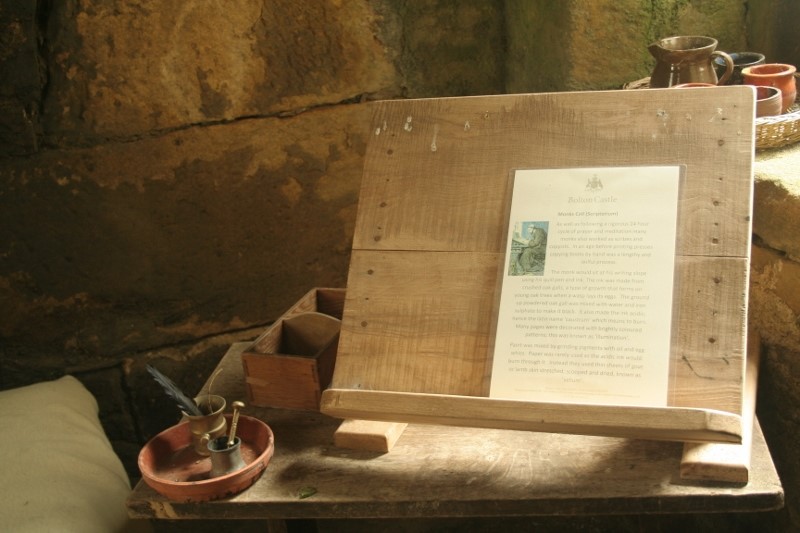
Return to the stairs and descend past the ticket office. Directly below the chapel is the malting house, which was also once the buttery, and which is laid out with trestle tables and benches, presumably for the weddings which are regularly hosted here. The small twelfth century windows make the whole room seem dark, even on a summer day. At the east end of the malting house is a kitchen area.
A further flight down takes you into the storage rooms. These are huge vaulted chambers with windows high up in the south wall, and sloping down from a level with the courtyard where archery sessions are carried out.
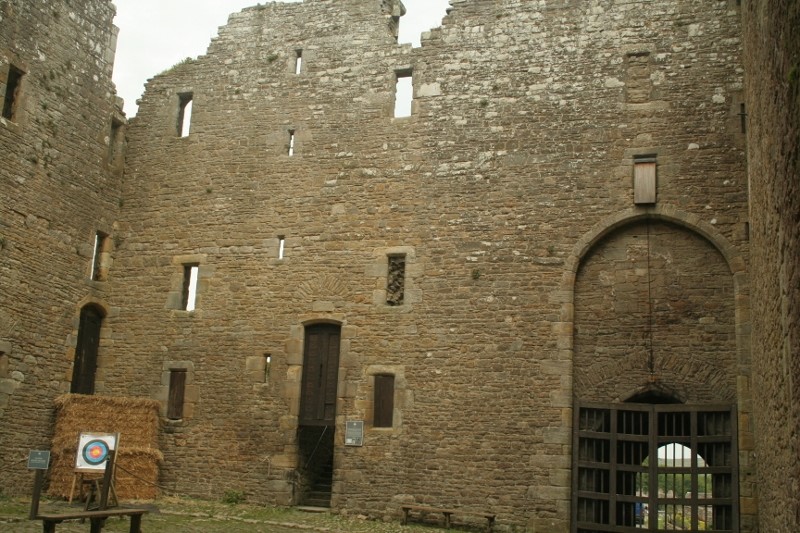
The courtyard is some hundred foot square. The range of buildings along the east side (the east ‘curtain’) was originally the quarters for the castle garrison. This is in ruins now, but later houses built into the walls remained into the 1920s. The portcullis in the courtyard was once the only entrance to the castle.
On the north curtain is a range of mainly derelict buildings that were the smithy and other necessary workshops and even a dungeon, as well as the well house that pre-dates the castle. When the castle was under attack (which was not infrequent – despite being some 80 miles from the border, there were numerous raids from the Scots or the border reivers) the tenants and livestock would have been herded in for protection. To the west end of the north curtain, traces of the original Great Hall can be seen in the stonework.
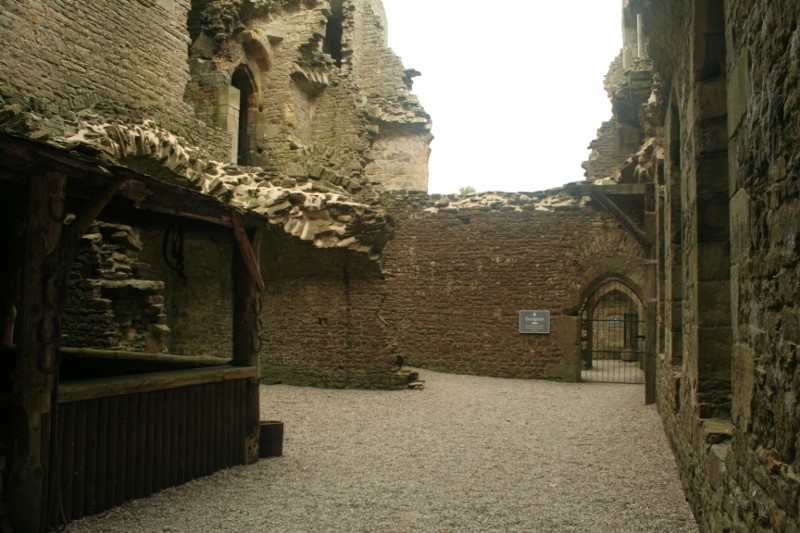
Outside, the gardens are laid out in front of the south face of the castle – they are not huge, but they are delightful. There is a little vineyard with neat rows of grape vines, enclosed in a high hedge. Outside that there is a small knot garden, stocked with herbs that would have been available in the mediaeval period for both medicinal and culinary purposes. There is also a smooth bowling lawn with a pretty herbaceous border, again using species available in the Middle Ages.
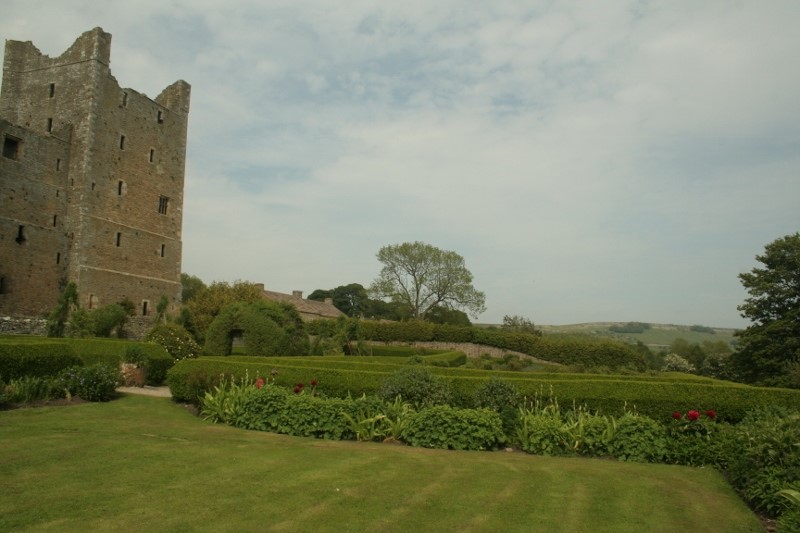
A short walk through the knot garden takes you to the falconry area, where there are daily displays. Nearby is a stone bee house.
The piece de resistance of the garden is the maze. It is not huge, but it is much trickier than it looks, and I made three or four false starts before I got to the middle.
